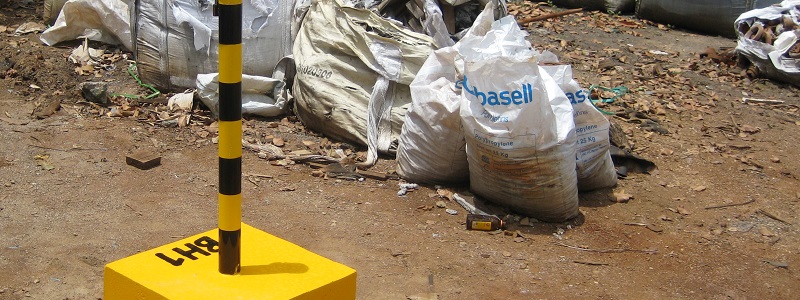Steel Foundry, Thailand
SLP Environmental was appointed to undertake a Phase 2 Environmental Site Assessment (intrusive site investigation) at a steel foundry facility located on the Eastern Seaboard of Thailand to assess whether past and/or current activities on the study site had resulted in soil and groundwater contamination. The Phase 2 ESA was instructed by a potential purchaser of the facility as part of the pre-acquisition environmental due diligence process.
The Phase 2 ESA site investigation locations were targeted to focus on areas of potential environmental concern that were identified during the preceding Phase 1 ESA and the scope of works comprised the rotary boring of several probe holes across the study site to a depth of approximately 5m below ground level (bgl) and the recovery of soil samples for laboratory analysis.
Groundwater monitoring wells were installed in several of the soil bores and these were developed and purged in accordance with industry best practice in order to obtain a representative sample from the shallow groundwater body.
Field monitoring for parameters such as pH, conductivity and dissolved oxygen was then undertaken prior to groundwater samples being recovered for laboratory analysis. The recovered soil and groundwater samples were scheduled for environmental testing for a bespoke range of organic and inorganic chemical analyses including heavy metals and volatile and semi-volatile compounds at a laboratory accredited to the appropriate international quality standards. A coordinates and elevation survey relative to mean sea level was undertaken at each borehole location and this data was utilised to determine the hydraulic gradient and shallow groundwater flow direction.
The soil and groundwater test results were compared with Thai Guideline Values published by the Pollution Control Department to assess if past and current activities on the site had resulted in soil or groundwater contamination. The interpretative reporting included a qualitative risk assessment for each identified potentially vulnerable human and environmental receptor along with an overall environmental risk rating for the study site. The report also included recommendations for further assessment and environmental management measures in order to better quantify and control the identified potential environmental risks.

